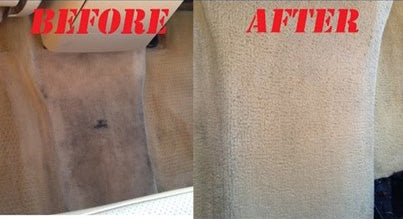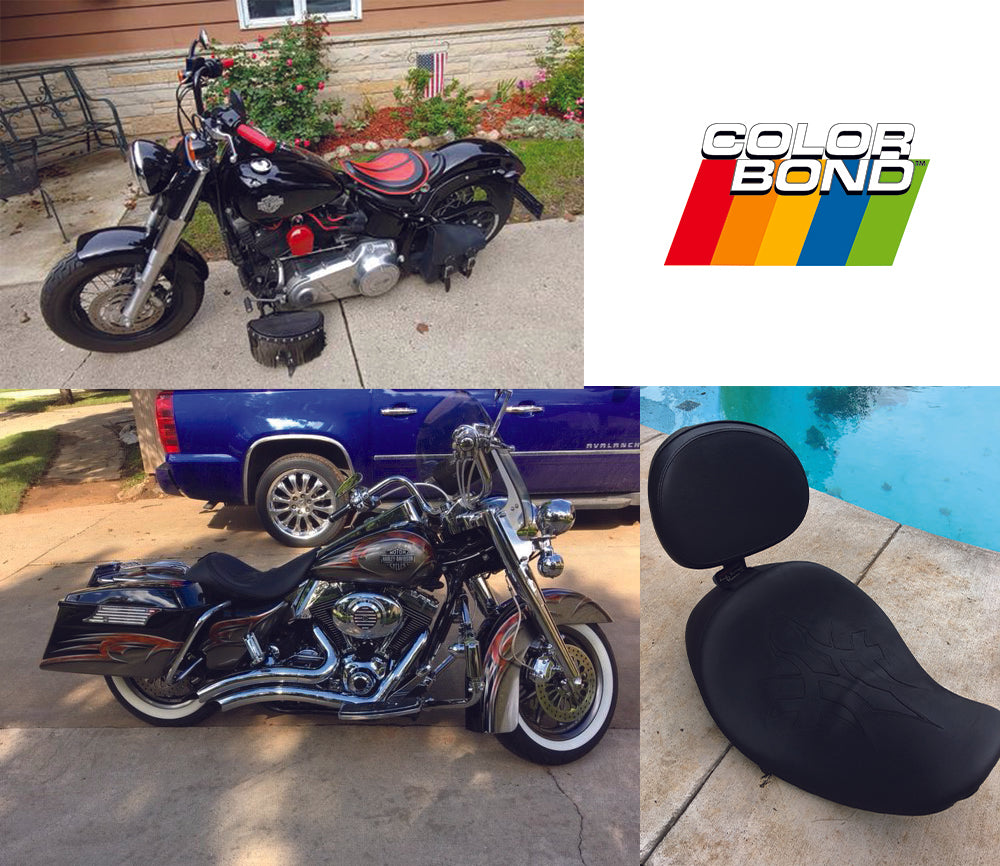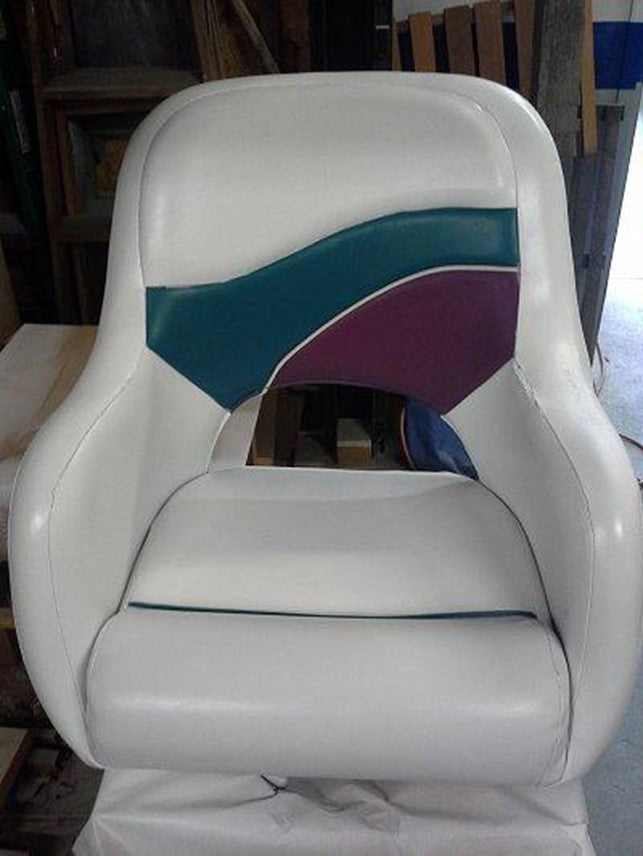
How to Protect Vinyl Boat Seats from Damage
Vinyl boat seats live in a harsh environment. Things like sun, salt water and mold and mildew can cause the vinyl to crack, fade, and stain. In this article we will go over how to protect vinyl boat seats, as well as what can be done if damage has already occurred.
- Sun Damage to Vinyl Boat Seats
While a sunny day is most welcome when boating, the sun is also the arch enemy of vinyl boat seats. As the seats are often exposed to direct sunlight, over time UV rays can dry out the vinyl causing it to crack. As well, it can make the vinyl fade and yellow.
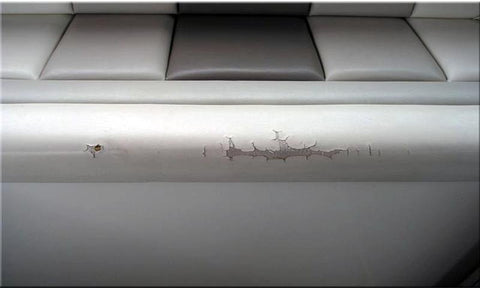
- How to Preserve Vinyl Boat Seats from Sun Damage
The best way to how to keep vinyl boat seats from cracking from direct sunlight is obvious; Keep them out of sunlight. This can be done in several ways and even more thoroughly by using a combination of these methods.
Slip-on boat seat covers can be used to cover and protect vinyl boat seats. They can be most easily found at marine supply retailers.
Accessory boat seat cushions can be placed on top of the lower cushion and against the back rest. This will keep the seats from direct sun exposure, as well as protect them from wear.
Spray protectants are a great way to protect vinyl from sun damage. A PTFE polymer-based product that conditions and protects against UV rays should be used. It’s important that vinyl remains supple and flexible.
Boat covers can be used to avoid sun exposure damage on boats stored outdoors, For the most thorough protection, use a quality boat cover that is graded for protection against UV. Again, boat covers are sold by most marine supply retailers.
- Saltwater Damage to Vinyl Boat Seats
Those who boat in saltwater environments can experience damage to their vinyl boat seats which is created by salt crystals that remain after accumulated saltwater spray evaporates. The crystals can act as an abrasive which can scuff the vinyl surface and cause cracking.
- How to Protect Vinyl Boat Seats from Saltwater Damage
Washing salt off the vinyl upholstery after each time the boat is taken out is highly recommended. A general wash can remove most of the salt, however other products can help more thoroughly clean, condition and protect the vinyl.
Use a soap specifically formulated for use on vinyl boat upholstery mixed with water. Scrubbing with a soft mitt, sponge or cloth will get the job done while not being abrasive.
Don’t use bleach or cleaners with a high alcohol content that can dry out the vinyl and cause cracking.
- A cleaning product like Salt Off can be used to more thoroughly dissolve and remove salt after the initial cleaning process has been completed.
- Mold and Mildew Damage to Vinyl Boat Seats
Mold and mildew can cause stains that can be hard, or impossible to remove. Not only does mold and mildew look bad, but it can smell awful.
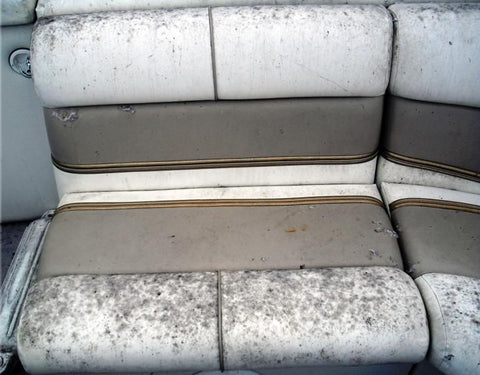
- How to Prevent Mold and Mildew on Vinyl Boat Seats
The best way to avoid mold and mildew is to keep the inside of the boat as dry as possible while it is being stored.
Boat Covers will keep water from entering and collecting inside your boat. Of course, you want to be sure the inside of the boat is dry before covering, so that moisture isn’t trapped. This leads to the need to be sure the boat is properly ventilated so that any condensed moisture from the air can breathe out. Which brings us to the next solution, ventilation.
Ventilate your boat so that it can breathe out stagnant moisture holding air. When temperatures change this moisture can condense on the interior and cause mold and mildew to grow. Vents can be installed in your boat including cowls, dorades, or active vents such as solar fans. The key is to increase air movement within the boat.
- How to Fix Damage That Has Already Occurred
If your vinyl boat seats are already damaged, there are ways to repair them and improve their appearance.
- How do You Fix Sun Damaged Boat Seats?
There are different ways how to repair sun damaged boat upholstery, depending on the type of damage.
Cracked vinyl can often be repaired with vinyl repair glue or patch kits if the damage hasn’t progressed too far. This will not only keep the crack from continuing to develop but can improve the appearance of the damaged seat.
Discolored or faded vinyl appearance can be restored with vinyl paint, such as ColorBond LVP leather vinyl and plastic paint. ColorBond LVP is a specialized paint designed to restore and renew vinyl (as well as leather and plastic) surfaces. Simple and easy to use, ColorBond LVP bonds strongly without cracking or peeling. The vinyl paint is highly pigmented to provide great coverage yet has a thin film that allows the vinyl surface texture to show through. The color and finish quality are beautiful, and the paint has the durability needed to last for many years. ColorBond LVP is available in over 205 colors, including OEM certified colors for Sea Ray boats, which can be viewed here. Of note, ColorBond LVP can be used to finish and improve the appearance of seats that have been repaired with vinyl repair glue and patch kits.
- How to Remove Mold and Mildew from Vinyl Boat Seats
Mildew and mold stains are often difficult to remove and are often permanent.
Mildew stain remover should be used on vinyl boat seats. Again, bleach and harsh cleaners can damage the vinyl and shouldn’t be used. Appropriate solutions can be found at marine supply retailers. Apply the mildew stain remover and let it soak as per the manufacturer’s instructions. An oxidation reaction will take place to remove the stain. The vinyl is then rinsed well.
If the stains are permanent, the appearance of the seats can be restored with ColorBond LVP, as described above.
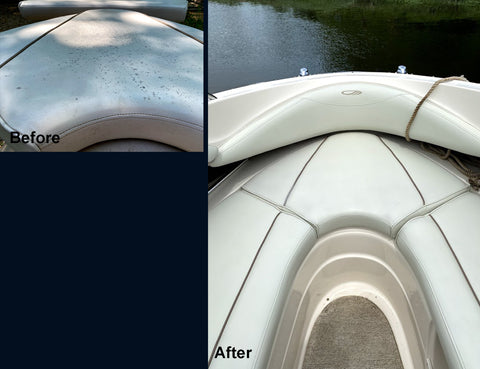
Mildew-stained boat seat cushion restored with ColorBond LVP
We hope you found these solutions for how to protect vinyl boat seats from damage useful. You can see other boat projects completed with ColorBond on our blog, including this incredible restoration.


